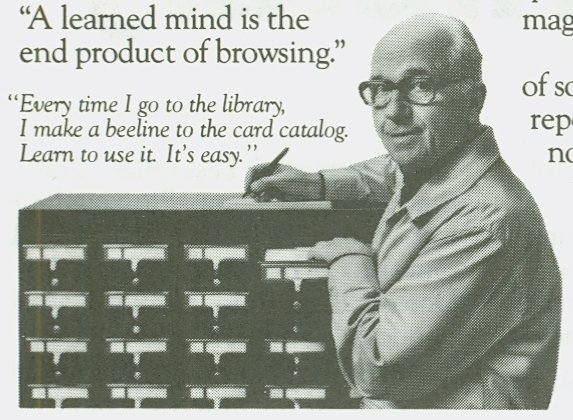I immediately thought of Douglas Adams whose piece called
“Build It and We Will Come” was published in The Independent on Sunday in November of 1999. The writing is
included in a posthumously published collection of Adams ’s
writings called, delightfully, The Salmon
of Doubt². It is also available as an audio book, which is how I first
experienced it, and makes for wonderful and enlightening moments. The breadth
of the man’s interests and writings astonished me and was also incredibly
freeing, as was the recognition of the difficulties of writing to deadline.
Why this piece in particular? Because of the thesis
statement buried deep in the middle of the thing: “The computer is actually a
modelling device. (92)”²
Because the person who wrote it is Douglas Adams, and
because I agree with him firmly based on the evidence given in the
aforementioned essay as well as independent ponderings after the fact, I’m not
going to try to convince you of the truth of the matter. I’m going to treat it
as fact.
Thinking of the catalog of Panizzi as the monster of
bibliographical information that it must be (with equally contorted card
catalogs that threatened to, and eventually did take over many library lobbies
and reading areas, and the sort of relief the floors may have felt when
computers with much smaller footprints began to carry the same information):
what exactly is a catalog modelling? I believe it is the brains of The Library.
I would say that the catalog is modelling the actions of Librarians, but they
are (in Truth if not in practice) specialized beings whereas catalogs are
created for the generalist user/reader/patron. Online catalogs are incredibly
useful entities for organizing, tracking and adding to or removing information
from entries into the catalog. They have the potential to interact with other,
already established catalogs, create MARC records with little strain and also
can be programmed to make bar codes and spine labels.
They can do everything that a team of librarians can do, and
they can do it more quickly and with less overt physical effort on the part of
those librarians. They do not replace human ingenuity or interaction with
materials, and they do have to be made to be flexible. But the basic idea of an
online or digitally maintained catalog is that when a person, a human, looks
for a book, that person goes to a provided computer terminal or available
website, enters the information that is at hand, and is given the coordinates
to find that item within their current context. Lists of books that don’t get
checked out, lists of periodical titles that the library holds subscriptions
for, items that are on order, damaged, in transit, etc. are generated as part
of the library’s functioning.
I know a woman who works at A Novel Idea in Lincoln , Nebraska
The library catalog has the potential to accomplish
something no less daunting than magic. It can help a reader find something he
or she was sure they’d never be able to identify. It cannot always leave traces
of how to find the treasure someone seeks, but it can, through subject
headings, authors, titles, series titles, keywords and the like, show the
reader something like the path that was taken to get to the treasure the first
time.
In order to accomplish such formidable tasks, minute and
thorough items of information have to be identified and entered into the
knowledge base of the catalog. It must be told when and how an item came to be
in the library. It must be told how an item relates to another item. Humans
must make educated guesses about the use of an item and include what
information will allow that item to be used and useful. Other humans may be
given the opportunity to add reviews and search terms, to suggest connections
that the catalogers may not have known existed. Involving the patrons in the
development of the library catalog is one of the brilliant strokes of catalog
development. It has need for mediation, but it is a powerful way to engage
library patrons with library materials.
The catalog is a model of the relationships built between
libraries and their communities. It is in deciphering those relationships that
we learn about the design of the model, and what meaning the library is seen to
have in the community.
¹
Battles,
Matthew. Library: An Unquiet History.
W.W. Norton & Company, New
York
²Adams,
Douglas . The Salmon
of Doubt, Harmony Books, New
York
³Mentré,
Mireille.
Illuminated Manuscripts of
Medieval Spain Thames and Hudson, Inc, London
Before I end this, I have to put my nomination forward for
canonizing Douglas Adams (who was, I know, an atheist; have a sense of humor).
I thought of that particular essay as I was typing up the other post. At the
library, I went looking for Homer in order to get details and ideas in mind for
what I plan to write during November (NaNoWriMo!), and found The Salmon of Doubt instead. When I’d
gotten home, fed the (starving!!!) cats, and unloaded my library haul (Illuminated Manuscripts of Medieval Spain³,
anyone? Oh, yeah), I opened the book right to the essay I wanted, even to the
page and almost the line. You can’t respect the man without at least nodding at
his beliefs, so I can’t quite see naming him a Deity, but at least a halo of
connectivity on portraits? If someone gets a chance, ask Stephen Fry, will
you? He’d know what to do.



No comments:
Post a Comment